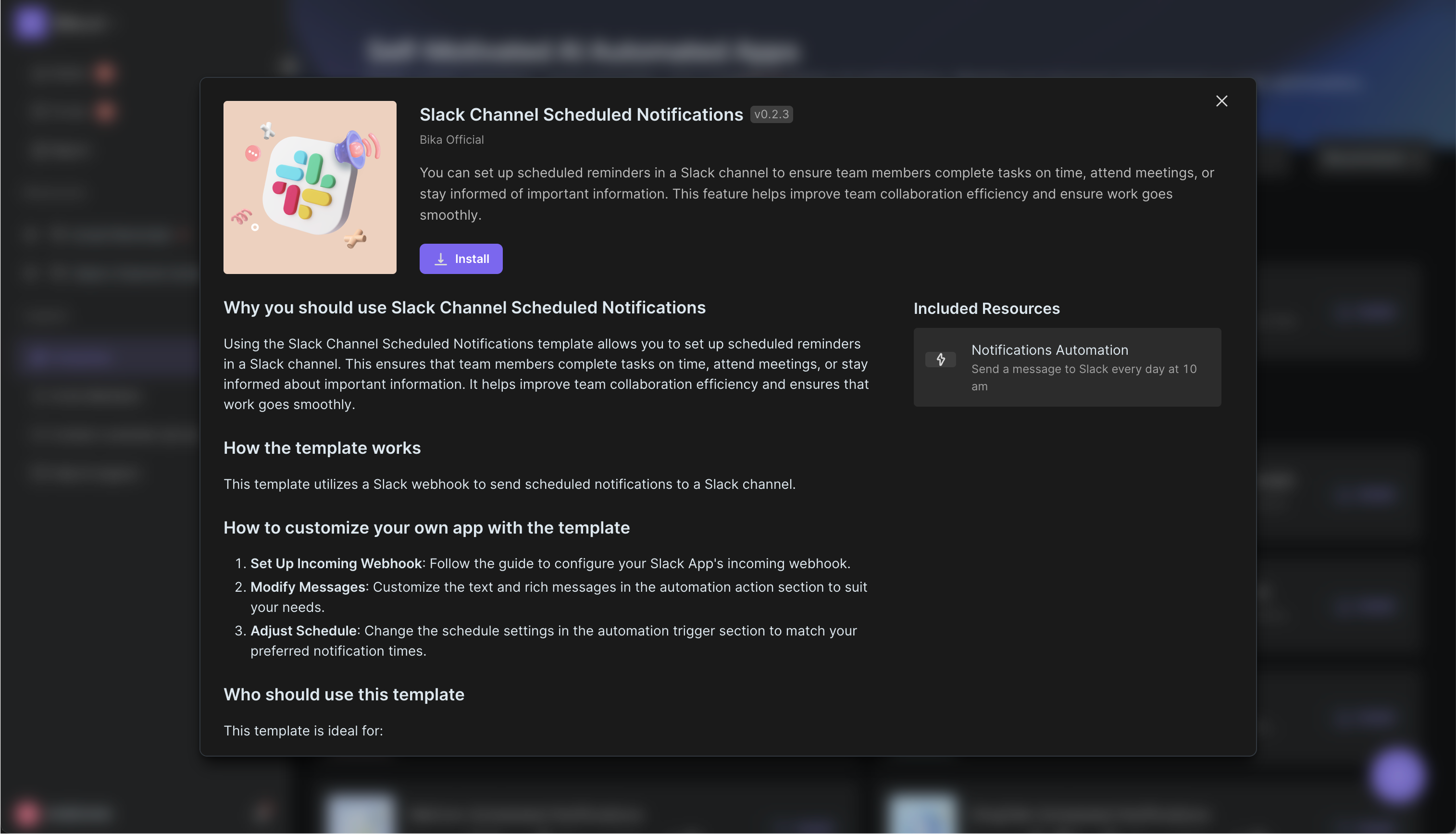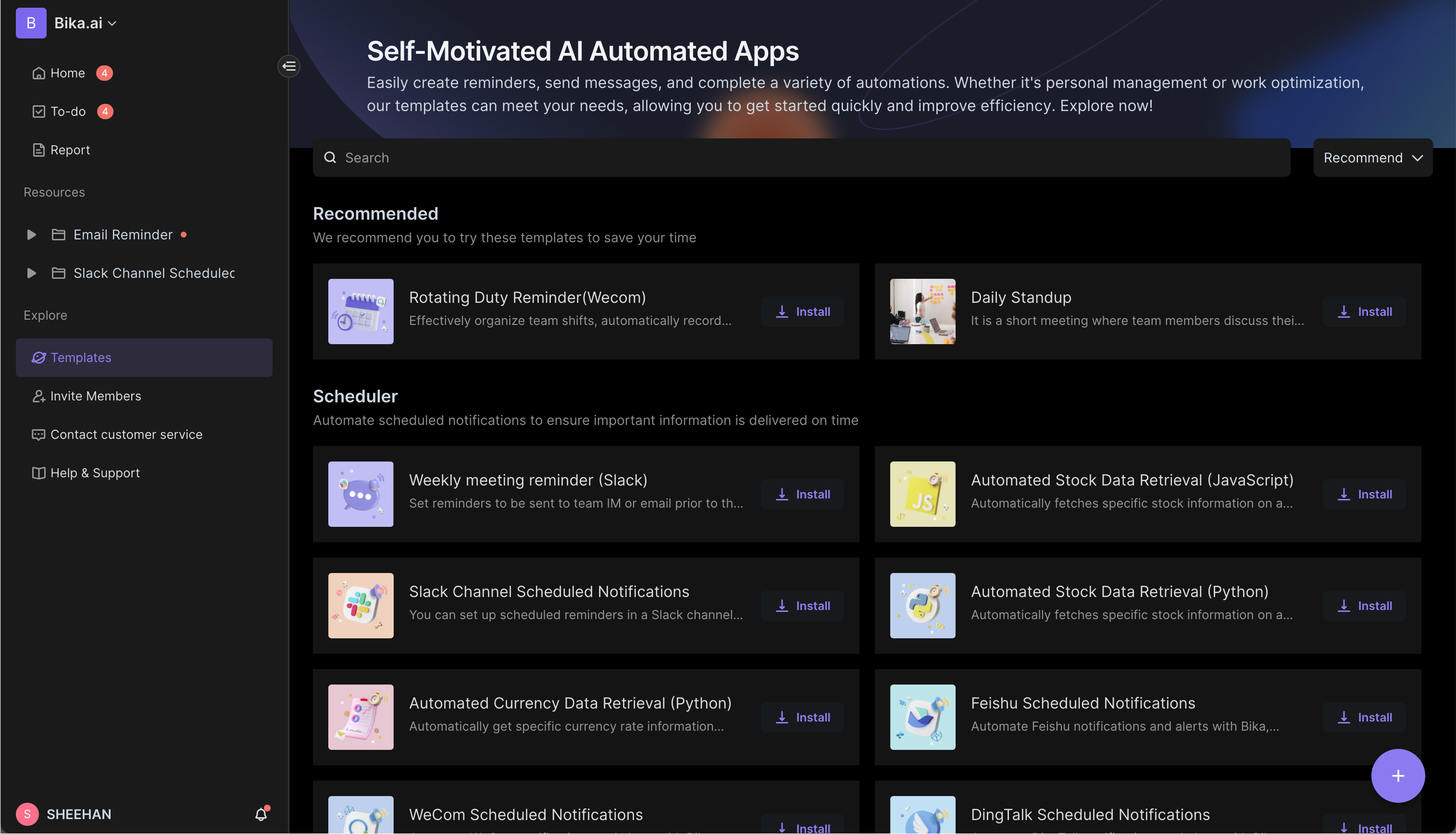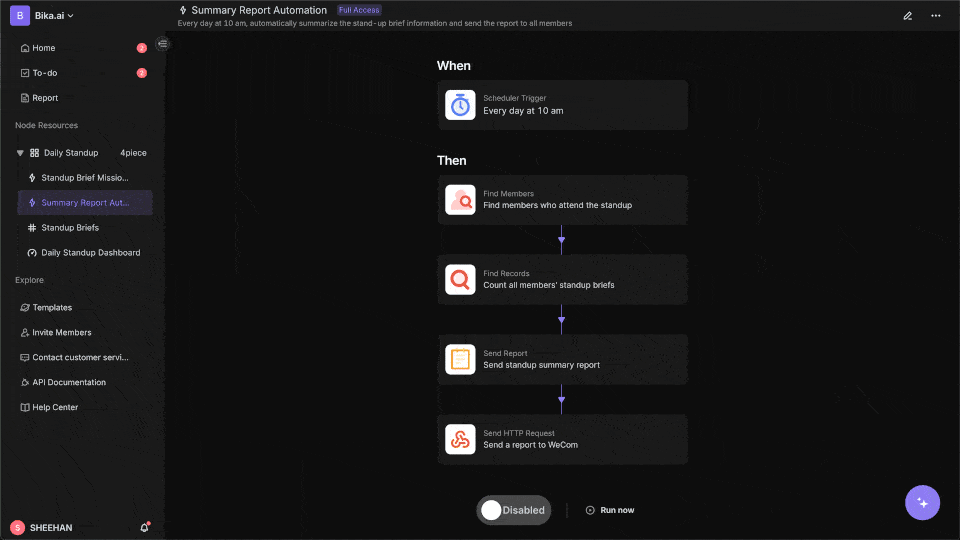
Unleash Collective Intelligence: How Agent Swarm & Bika.ai are Revolutionizing AI Automation
The Dawn of Collective Intelligence: Understanding Agent Swarm
Artificial Intelligence has come a long way from its humble beginnings. For a while, the focus was on developing powerful single - agent AI systems that could perform specific tasks with great precision. However, as the complexity of real - world problems grew, it became evident that a new approach was needed. Enter the concept of the agent swarm.
An agent swarm can be defined as a collection of multiple AI agents that collaborate with each other to achieve a common goal. These agents are not just isolated entities; they communicate, share information, and work in harmony. This paradigm is gaining traction because it mimics the natural phenomenon of swarming seen in nature, such as in bee colonies or bird flocks. In these natural swarms, individual entities work together, and the collective behavior that emerges is far more complex and effective than what any single entity could achieve alone. Similarly, in an agent swarm, the combined intelligence of multiple agents can tackle problems that are beyond the capabilities of a single - agent AI.
:::: key-takeaways ::::
- An agent swarm is a group of multiple AI agents collaborating towards a common goal.
- It draws inspiration from natural swarming behaviors seen in nature.
- This approach is becoming popular as it can handle more complex real - world problems compared to single - agent AI. ::::
Beyond Single Agents: How Agent Swarms Work
In an agent swarm, the agents interact through various communication protocols. These protocols enable them to share information about their tasks, status, and any relevant data. Task decomposition is another crucial aspect. Complex problems are broken down into smaller, more manageable sub - tasks, and each agent is assigned one or more of these sub - tasks.
For example, in a software development project, one agent could be responsible for code review, another for testing, and yet another for documentation. These agents collaborate by sharing the results of their sub - tasks. As they work together, emergent behavior can be observed. Emergent behavior is the unexpected and often beneficial behavior that arises from the interaction of individual agents. It's like how a group of simple ants can create a complex and efficient nest.
When compared to traditional single - agent AI systems, agent swarms have several advantages. Robustness is one key advantage. If one agent in a swarm fails, the other agents can often compensate and continue working towards the goal. In contrast, a single - agent AI system failing means the entire operation stops. Flexibility is another plus. Agent swarms can adapt to changing environments and requirements more easily. They can re - assign tasks among agents as needed. And in terms of problem - solving complexity, agent swarms can handle much more intricate problems by leveraging the combined intelligence of all agents.

The Promise and Potential Applications of Agent Swarms
Agent swarms have the potential to revolutionize multiple industries. In complex scientific research, such as drug discovery, agent swarms can be used to analyze vast amounts of chemical data. One agent could search through databases of known compounds, another could predict the biological activity of potential drug candidates, and yet another could simulate how these compounds would interact with the human body. This collaborative approach could significantly speed up the drug discovery process.
In climate modeling, agent swarms can help in simulating different aspects of the climate system. Some agents could focus on ocean currents, others on atmospheric conditions, and by sharing data and collaborating, they can create more accurate climate models.
Automated enterprise workflows and supply chain optimization are also prime areas for agent swarm applications. Agents can be used to manage inventory levels, predict demand, and optimize transportation routes. For instance, one agent could monitor inventory levels at different warehouses, another could analyze market trends to predict demand, and a third could optimize the routes for delivery trucks based on traffic conditions and delivery schedules.
In financial market analysis and trading, agent swarms can analyze multiple data sources simultaneously. Some agents could focus on news sentiment analysis, others on technical analysis of stock prices, and together, they can make more informed trading decisions.
Robotics and autonomous systems are also set to benefit. Drone swarms, for example, can be used for tasks like surveillance, search - and - rescue operations, or agricultural monitoring. In a smart factory, agent - controlled robots can collaborate to assemble products more efficiently.
In the gaming and virtual environments, agent swarms can create more realistic and dynamic non - player characters (NPCs). These NPCs can interact with each other and the player in more complex ways, enhancing the overall gaming experience.
Notable initiatives like OpenAI Swarm are exploring the potential of multi - agent systems. While we won't delve too deeply into it, it's part of the broader movement in the AI community to push the boundaries of what multi - agent systems can achieve.
For more information on agent swarms, you can refer to these reputable sources: RelevanceAI's article on agent swarms and CIO.com's article on agent swarms.

From Theory to Practice: Building Your AI Team with Bika.ai
The concept of an agent swarm, once just a theoretical idea, is now becoming a practical reality. Bika.ai is at the forefront of this trend. It is a platform that allows users to assemble their own AI teams, essentially creating agent swarms.
Bika.ai offers a user - friendly interface where users can combine different AI agents or functionalities. This means that regardless of your technical expertise, you can build an AI team tailored to your specific tasks or workflows. Whether you're in a business looking to automate repetitive processes, a researcher aiming to analyze complex data, or a developer seeking to enhance the capabilities of your application, Bika.ai provides the tools to build an effective agent swarm. The ease of deployment and customization makes it accessible to a wide range of users.

Spotlight on the Customer projects Template: An Example AI Team in Action
The Customer projects Template on Bika.ai is a prime example of an agent swarm in action. This template is a game - changer for consulting companies, law firms, and sales teams.
It helps in calculating the hours worked that require compensation, gives a comprehensive overview of project progress, and creates a collaborative platform. The template consists of several components. The Projects Board is a dashboard that offers visual insights into project and task status, with charts and numbers for a quick overview. The Projects Database manages all project details such as status, start and end dates, notes, contacts, and tasks. The Task of Projects Database tracks task - specific information like task name, owner, start and end dates, status, estimated hours, client cost, and related files. The Contacts Database stores contact information including name, company, title, type, phone, email, website, and links to customer projects.
These components work together like a well - oiled machine. For example, a project manager can use the Projects Board to quickly see which projects are on track and which need attention. They can then use the Projects Database to update project details. Sales teams can use the Contacts Database to manage client relationships and the Task of Projects Database to track tasks related to each customer project.
The key features of this template include comprehensive project management, task tracking, contact management, and visual dashboards. To use it, you start by accessing the template. Then, navigate to the Projects Board for an overview, use the Projects Database to manage project details, track tasks in the Task of Projects Database, and keep your contacts organized in the Contacts Database.
If you're involved in project management, customer management, or task management, this template is for you. You can adapt it for different domains and scenarios. For example, a marketing agency could use it to manage client campaigns, with each campaign being a project.
Try the Customer projects Template
The Future is Collaborative: Empowering Users with Agent Swarms
Agent swarm technology has the potential to transform the way we approach problem - solving and automation. Platforms like Bika.ai are democratizing access to this powerful technology, allowing users from various backgrounds to build their own AI teams.
Instead of relying on individual AI tools, we can now create coordinated AI teams that can handle complex tasks more efficiently. By leveraging the capabilities of agent swarms, we can redefine our approach to automation, whether it's in business, research, or any other field.
We encourage you to explore Bika.ai and start building your own AI teams. Unlock the power of collective intelligence and take your automation efforts to the next level.

FAQ
Q: What is the main advantage of an agent swarm over a single - agent AI system? A: The main advantage is robustness. If one agent in a swarm fails, other agents can compensate, while a single - agent AI system failure halts the entire operation. Additionally, agent swarms offer more flexibility and can handle more complex problems.
Q: How can Bika.ai help in building an agent swarm? A: Bika.ai provides a user - friendly platform where users can combine different AI agents or functionalities. It allows for easy deployment and customization, enabling users to build an AI team (agent swarm) tailored to their specific tasks or workflows.
Q: Who can benefit from using the Customer projects template on Bika.ai?
A: Project managers looking to streamline processes and track project progress, sales teams managing customer projects, and anyone involved in project management, customer management, or task management can benefit from this template.

Recommend Reading
- Automating User Engagement: Unveiling the Best Email Client for Mac and Bika.ai's Onboard & Engage Template
- Choosing the Right AI Content Detector: A 2025 Comparison Guide
- Automating AI Marketing Campaign Analysis: Bika.ai vs ChatGPT, Zapier, Make, and Airtable
- Beyond ChatGPT: Choosing the Right AI Tool for YouTube Publishing Process Automation - Bika.ai Compared
- Choosing the Right AI Content Detector: A 2025 Comparison Guide
Recommend AI Automation Templates




